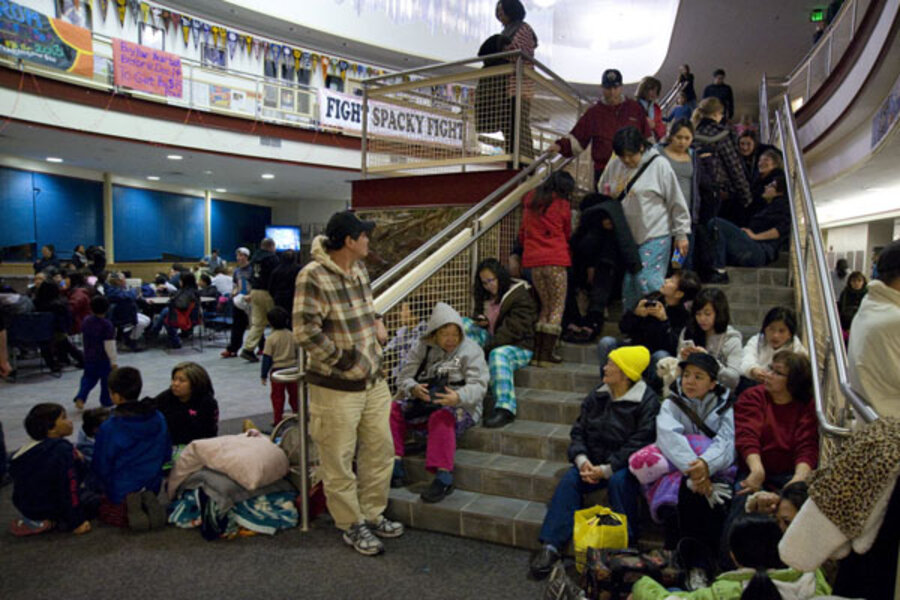Earthquake shakes Alaska, Canada
Loading...
A powerful earthquake sparked a tsunami warning for hundreds of miles of Alaskan and Canadian coastline, but the alert was canceled when no damaging waves were generated.
The magnitude 7.5 quake and tsunami warning that followed caused concern in some coastal communities, with alarms sounding and people rushing to higher ground for safety.
But the Alaska Tsunami Warning Center later said the waves were too small to pose a threat, reaching just six inches above normal sea level in places such as Sitka and Port Alexander.
"Initially, in the first 15 to 20 minutes, there might have been a bit of panic," Sitka Police Chief Sheldon Schmitt told The Associated Press in a phone interview. But he said things calmed down as the town waited for the all clear.
The temblor struck at midnight Friday (1 a.m. PST Saturday) and was centered about 60 miles west of Craig, Alaska, the U.S. Geological Survey said.
Seismologist Jana Pursley of the USGS said the quake was followed by six aftershocks, the strongest of which registered a 5.1 and came nearly four hours after the initial quake.
"Houses shook; mine had things tossed from (the) wall," Craig Police Chief Robert Ely said. But he added that there were "no reports of any injuries, no wave, no tidal movement seen."
The tsunami warning was eventually expanded to include coastal areas from Cape Fairweather, Alaska, to the northern tip of Vancouver Island, Canada — an area extending more than 700 miles.
The center had warned that "significant widespread inundation of land is expected," adding that dangerous coastal flooding was possible.
In its cancellation statement, the center said that some areas were seeing just small sea level changes.
"A tsunami was generated during this event but no longer poses a threat," the center said.
The Alaska Earthquake Information Center said the quake was widely felt but it received no reports of any damage.
"It was the most intense earthquake I've felt in my 10 years here. I'm pretty sure there was stuff falling off of shelves," Chief Schmitt said. "There is no report of any wave activity here."
He said that an evacuation sirens and announcements came shortly after the quake, prompting the temporary rush to higher ground.
Some people in Craig also moved to safer territory.
"Several citizens elected on their own to move to higher ground. Several locations in Craig were set up for staging (and) shelter," said Chief Ely, adding that "no evacuation was ordered."
In addition to the warning, a tsunami advisory was briefly in effect for some Alaska coastal areas to the north of the warning zone, as well as to the south of the zone, from the Washington state border to the northern tip of Vancouver Island.
A tsunami warning means an area is likely to be hit by a wave, while an advisory means there may be strong currents, but that widespread inundation is not expected to occur.







